Population (2000) 619,178 Area 2,142 km² | Median income 35,775 | |
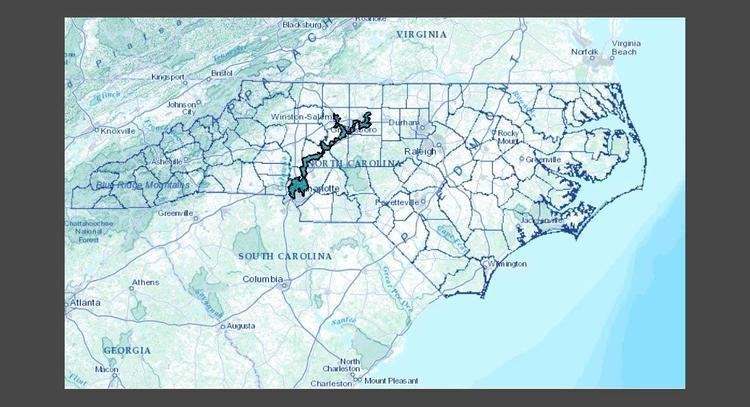 | ||
Distribution 88.5% urban11.5% rural Ethnicity 47.2% White44.6% Black2.1% Asian7.1% Hispanic0.4% Native American0.1% other Occupation 32.1% Blue-collar51.9% White-collar16.0% Gray-collar | ||
North Carolina's 12th congressional district is located in central North Carolina and comprises portions of Charlotte, Winston-Salem, Greensboro, Lexington, Salisbury, Concord, and High Point.
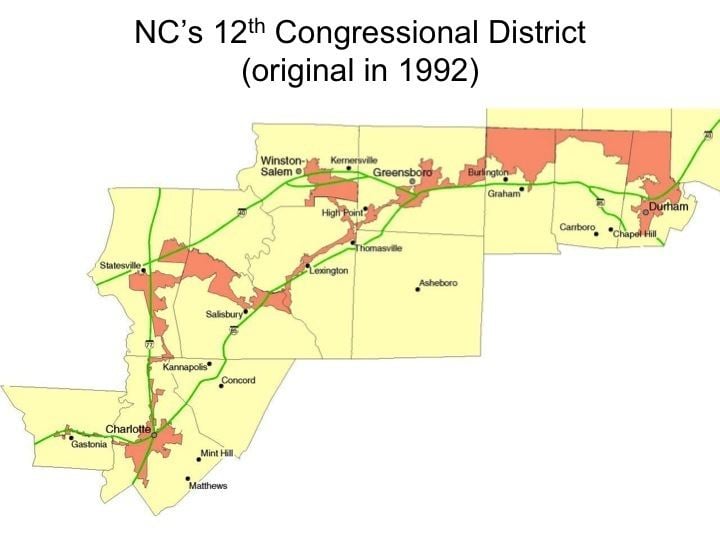
It was one of two minority-majority Congressional districts created in the state in the 1990s. As of the 2000 United States Census, there is a small plurality of White Americans in the district, though African Americans make up comparable proportion of its voting population.
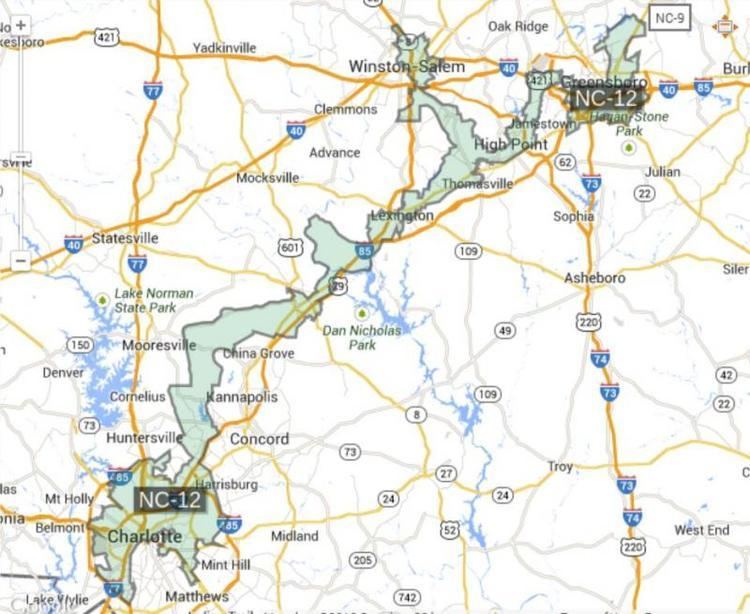
North Carolina had a twelfth seat in the House in the nineteenth century and in the mid-twentieth century (1943–1963).
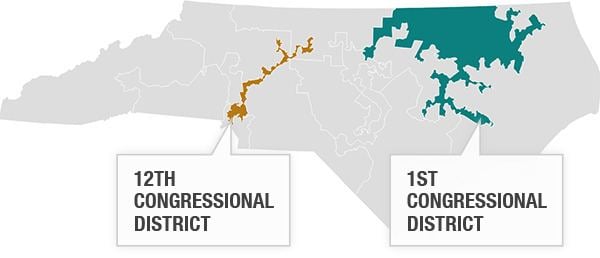
Re-establishment from 1990
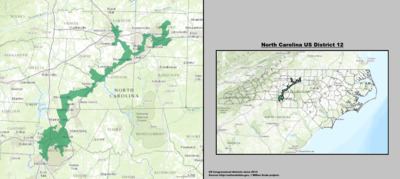
The district was re-established after the 1990 United States Census, when North Carolina gained a House seat due to an increase in population. It was drawn in 1992 as one of two minority-majority districts, designed to give African-American voters (who comprised 22% of the state's population at the time) the chance to elect a representative of their choice; Section 2 of the Voting Rights Act prohibited the dilution of voting power of minorities by distributing them among districts so that they could never elect candidates of their choice.
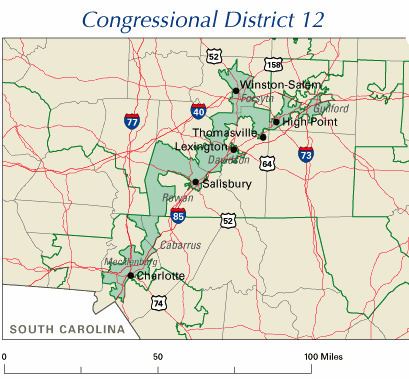
In its original configuration, the district had a 64 percent African-American majority in population. The district boundaries, stretching from Gastonia to Durham, were so narrow at some points that it was no wider than a highway lane. It followed Interstate 85 almost exactly. One state legislator famously remarked, after seeing the district map, "if you drove down the interstate with both car doors open, you’d kill most of the people in the district."

The United States Supreme Court ruled in Shaw v. Reno (1993) that a racial gerrymander may, in some circumstances, violate the Equal Protection Clause of the United States Constitution.
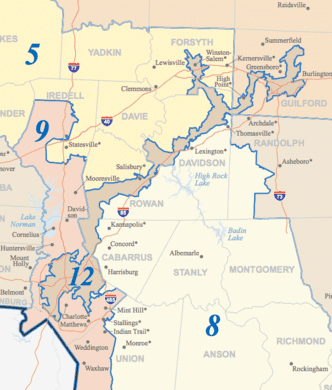
The state legislature defended the two minority-majority districts as based on demographics, with the 12th representing people of the interior Piedmont area and the 1st the Coastal Plain. Subsequently, the 12th district was redrawn several times and was adjudicated in the Supreme Court on two additional occasions. The version created after the 2000 census was approved by the US Supreme Court in Hunt v. Cromartie. The district's configuration dating from the 2000 census has a small plurality of whites, and it was changed only slightly after the 2010 census. African Americans make up a large majority of registered voters and Hispanics constitute 7.1% of residents. In all of its configurations, it has been a Democratic stronghold; its current incarnation is dominated by black voters in Charlotte, Greensboro, and Winston-Salem.
On February 5, 2016, U.S. Circuit Judge Roger L. Gregory ruled that the district, along with North Carolina's 1st congressional district, must be redrawn, and that race could not be a mitigating factor in drawing the district.
